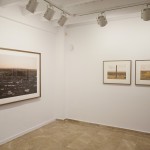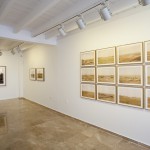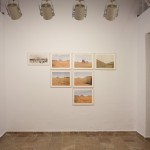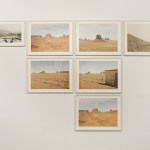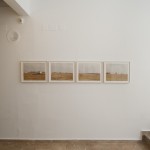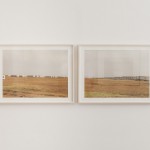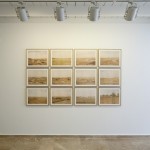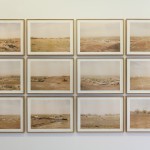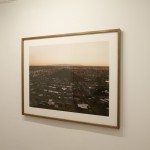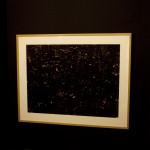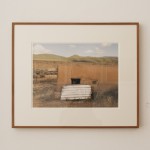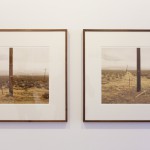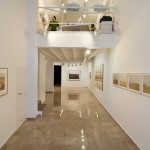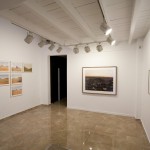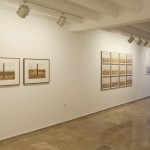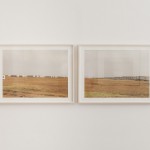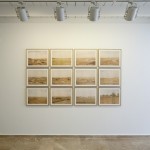José Guerrero. To come back
To Come Back. José Guerrero. 11.10.12_24.11.12
In the exhibition works done by the author in the United States the past year will be displayed in an unprecedented way, placing them in relation to photographic work he completed during his first trip to the U. S. in 2002, which was on view at Alarcón Criado in 2010.
José Guerrero, trained in architectural technique, works in the field of photography. The formal approaches involved in his work are the express state of human action in urban border areas, looking into the process of the expansion of cities and the seasonal cycles that these processes change. His work is structured in thematic series that have to do with toponymy; despite the singularity of the artist’s visual scheme, constant uncertain readings arise among his works, so that finally they suggest a kind of neutral space, without identity, impossible to associate with a specific geographic context for certain. Guerrero was awarded the Manuel Rivera Grant in 2011 and 2012 for the development of a collaborative project with Mark Klett, an American artist and professor at the University of Arizona, Phoenix. In this show he will present the second part of works created on his various work trips in the U.S., gathered under the titled “To Come Back.” Guerrero attempts to document diverse locations in Arizona with the goal of being able to relate places that he photographed earlier with areas such as the desert of southeast Andalusia. Guerrero’s work is a constant reference to previously completed photographs that return to echo his most recent works, linking together a series of trips in 2002 (California) with works from 2006-2007 (Desértica), and with this most recent 2012 series (To Come Back), an art project that seeks to relate the aesthetics of American landscapes to the artist’s previous projects.
José Guerrero
“TO COME BACK”
(Personal statement for the project To Come Back. 4 March 2012)
From the beginning of my career as a photographer, my work has revolved around themes such as memory and forgetting, the processes of landscape transformation, and our perception of this through the image. I understand that photography is a powerful language as a means of expression when it is inserted in a specific discourse. Nature, the city, the rural and urban, man and his mark on space and time; these are themes that I obsess over and through which, by means of photography and in a certain register, I feel as though I can express myself as an artist.
“To Come Back” is a project that is in the middle of the editing process. In large part the photographs were taken in the state of Arizona while I used the 14th Manuel Rivera Grant, which was awarded to me by the Council of Granada to work as a guest artist with Mark Klett at Arizona State University. These works are complemented by other photographs that I completed on a previous trip to the states of California, Nevada, Utah, Colorado, New Mexico, Oklahoma, Arkansas, Mississippi, and Alabama. In the spring of 2012 I will travel from Houston to Los Angeles to continue working on this project.
The title can be understood through its various translations: to return, to begin again, to repeat, to restart, to examine… All of these are recurring ideas in the theoretical reasoning – and the practical development – of my different works. The project that I am doing now in the American Southwest landscape is divided by my personal fascination with the immensity of the territory, the light and the color of the desert, and the work many of my professional referents completed there: Lewis Baltz, Robert Adams, Mark Klett, and Richard Misrach, among others. My challenge, however, is to try to actively integrate these references into my own discourse based on my own postulates.
The photographic series and murals published so far propose a polyhedral and transverse spatial vision that conditions the way in which to “read” and “understand” photographs; already not individually, but rather as parts of a whole. The distinct images within this series are related like verses in a poem, or notes in a musical composition. In this sense, light, color, and a specific atmosphere are fundamental elements in my work; like the horizon line in this project, they behave like a conductive wire charged with symbolism.
I am interested in working with the icons and the specific nature of the landscapes that I photograph, but always in search of a “universal vision” of them. This is an idea that I have emphasized in previous projects, and in an evident manner in the two diptychs from the series “Down Town,” in which I compare urban scenes in New York and Tehran, and in Moscow and Cairo. In this sense, my journey around the American Southwest is similar to that which I completed five years ago in the deserts of Almeria, Granada, and Murcia in southeast Spain. When I advance in the editing process of this work, I will posit relationships between the two series from the same horizon, the same light, the same color, the same atmosphere. In short: “the same photographic discourse.”




